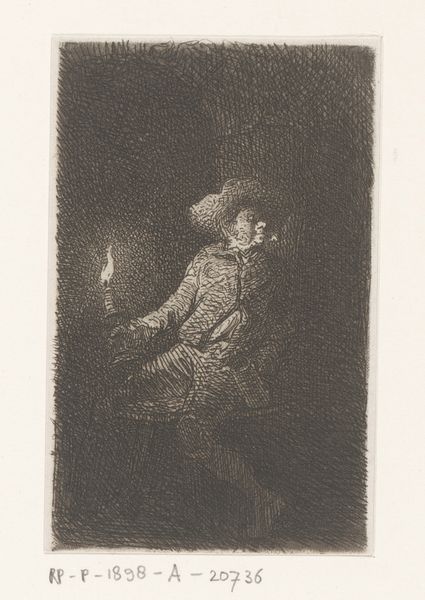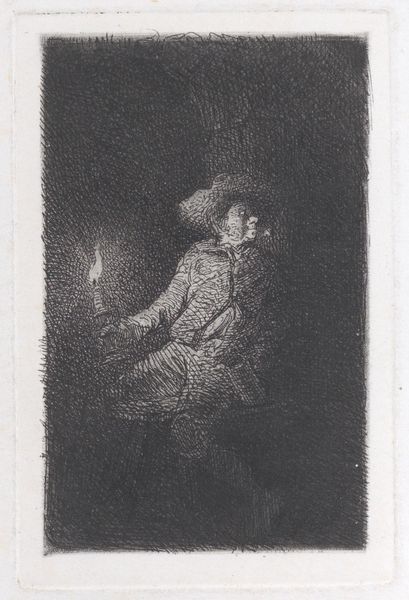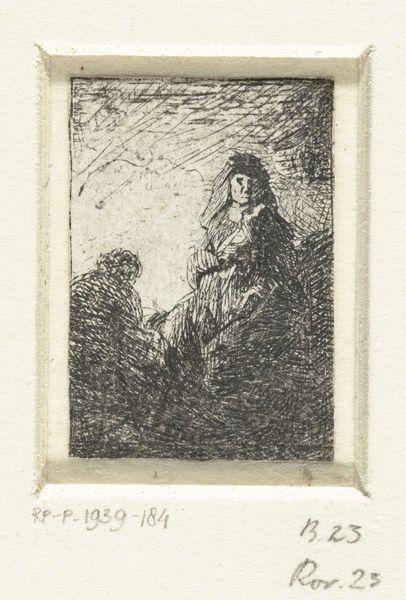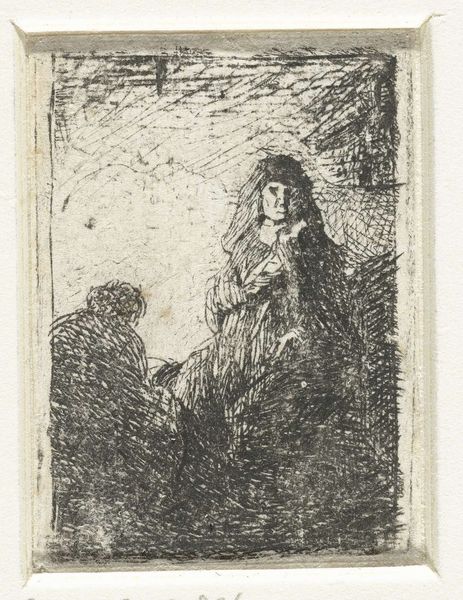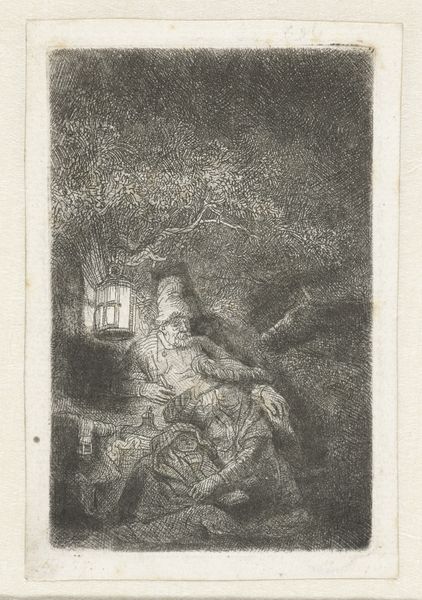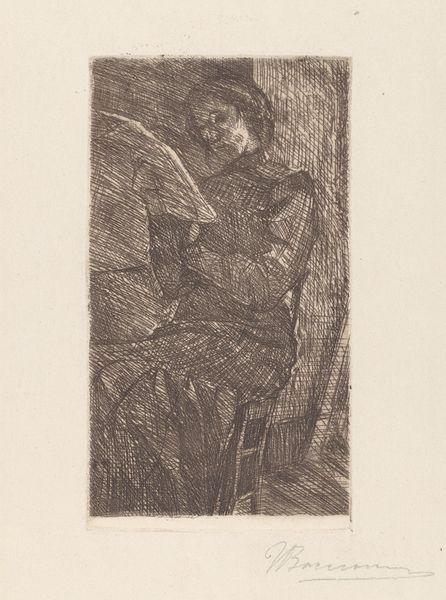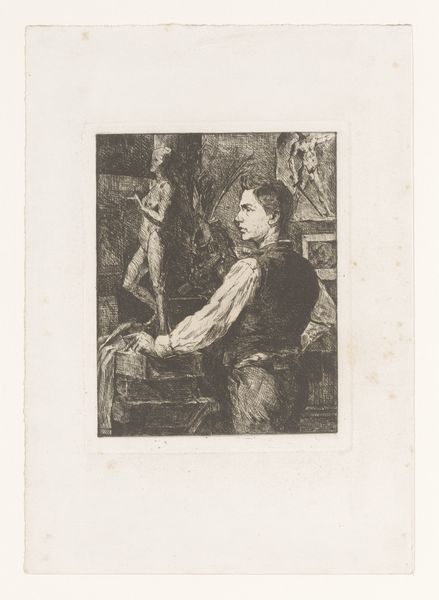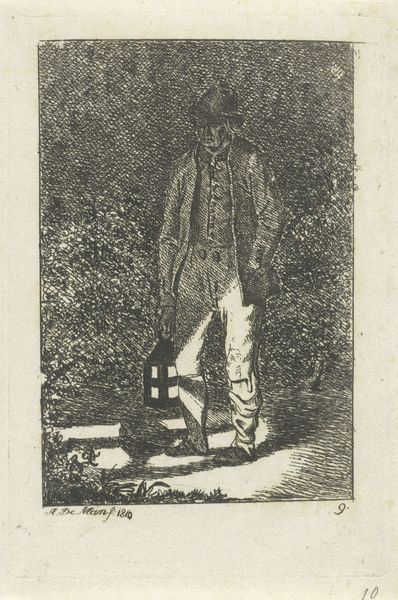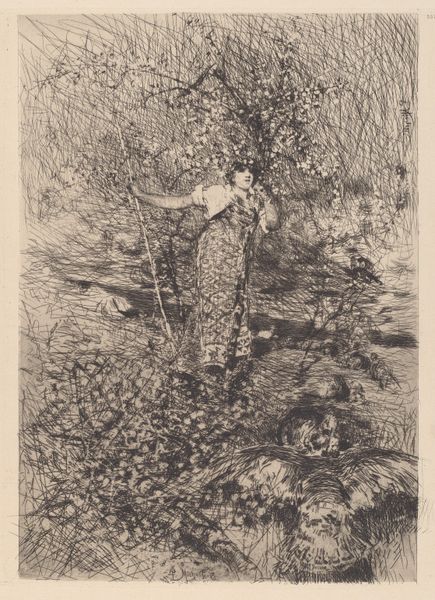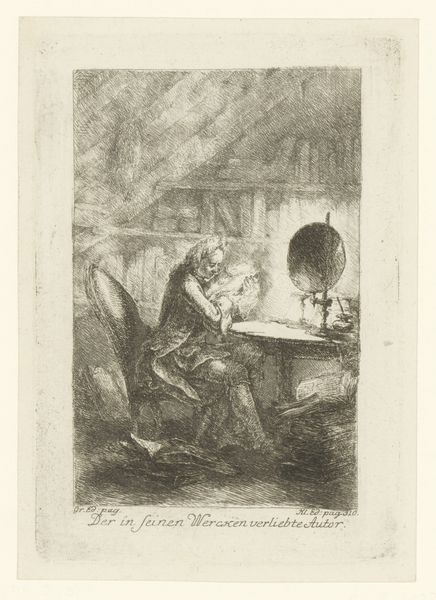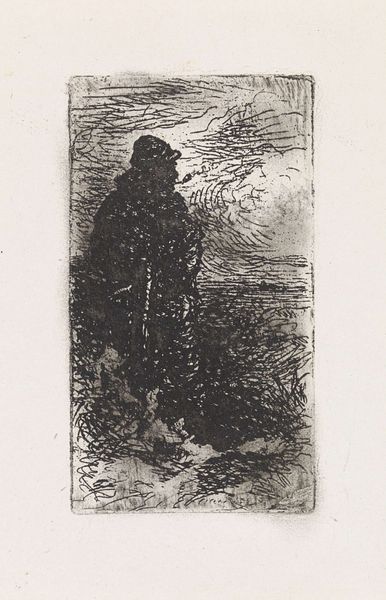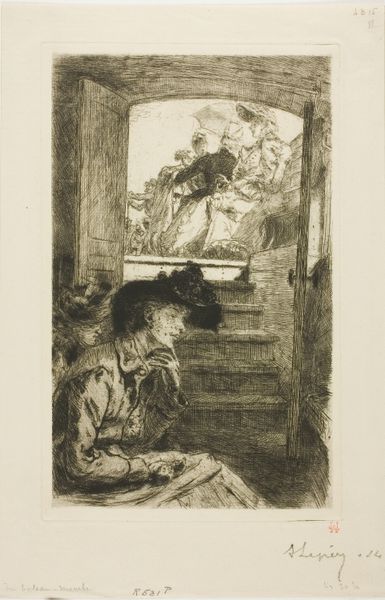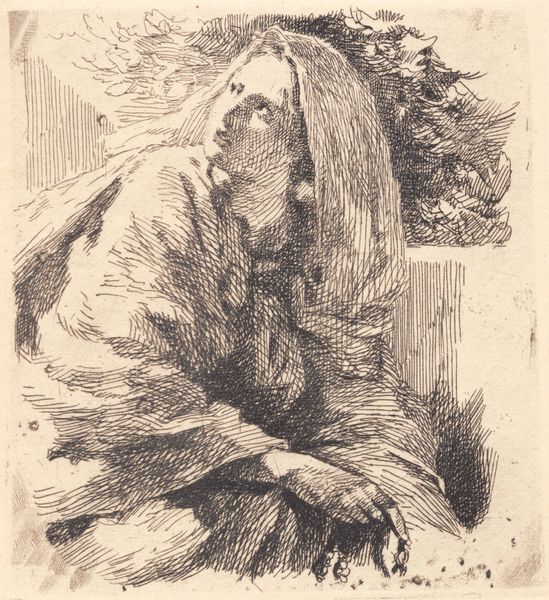
Dimensions: height 95 mm, width 61 mm
Copyright: Rijks Museum: Open Domain
Curator: This etching by Charles Jacque from 1842, titled "Rokende man in kelder bij kaarslicht," which translates to "Smoking Man in Cellar by Candlelight," plunges us into a dimly lit interior. What is your immediate reaction? Editor: The stark contrasts immediately grab you. The heavy use of dark lines really sets a somber mood, but there's an intimacy, a focus on the texture of the light playing on the figure. Curator: Jacque, a student of Paul Delaroche, demonstrates an interesting approach to chiaroscuro, heavily influenced by the Baroque masters. His interest in peasant life and military scenes clearly emerges during this period of intense social change across Europe. Do you feel this scene has anything to say about social inequality? Editor: The diagonal lines really lead the eye to the candle and then up to the subject's face. His gaze looks away from us, adding an air of mystery. This close focus seems less about any larger political statement, but, given that, the setting and character’s garments do raise questions. Curator: Indeed. He’s depicted in what could be period attire, reminiscent of historical military garb, possibly referencing social status while the cellar suggests hidden histories or underground activity. But what about that stark darkness and then small flicker of light? Editor: This use of chiaroscuro is wonderful and it almost feels staged. It seems Jacque wasn’t afraid to play with the possibilities of what the interplay between darkness and light could add. I love how you can trace the texture of those strokes that he employs to generate depth and emotion. Curator: Jacque would go on to great success, painting large pastoral landscapes for the French upper class. Perhaps this etching provides a critical lens through which to understand his broader social perspective. Editor: For me, it comes down to how light is depicted as a tactile element within an atmospheric void. That contrast is so memorable. Curator: An atmospheric work with a historical bent indeed, which speaks to us today from within the shadowed corners of the past. Editor: It definitely is. It also shows the possibilities of etching; here, chiaroscuro demonstrates the ability to play around with dramatic potential.
Comments
No comments
Be the first to comment and join the conversation on the ultimate creative platform.
